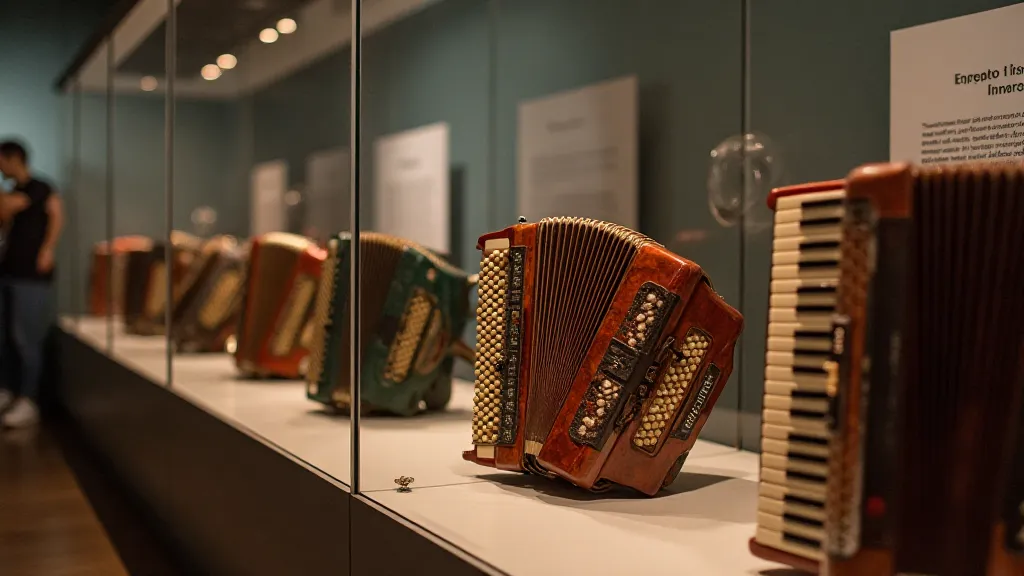Echoes of Occupation: How Colonialism Shaped Regional Speech
There's a certain melancholy in the sound of an antique accordion. Not sadness, precisely, but a resonant echo of lives lived, of dances held in dusty halls, of songs carried on the wind across generations. I recently acquired a beautifully restored German accordion, a 'Helikon' from the 1920s, and as I trace my fingers over its intricate mother-of-pearl keys, I find myself thinking about the unseen forces that have shaped not just instruments, but languages – the subtle, pervasive influences of colonialism. It’s a subject rarely considered, often overshadowed by the grand narratives of political conquest, but the impact on language, on the nuances of local speech, is undeniable. It's a linguistic palimpsest, where the original text is partially obscured, yet still visible beneath the superimposed layers of another tongue.

The Tangled Roots: A Historical Overview
Colonialism wasn’t just about drawing lines on maps and claiming territory; it was a complex process of cultural imposition. The colonizers, believing their language and culture superior, often mandated their use in education, government, and commerce. This wasn’t necessarily a deliberate attempt to eradicate local languages – although that sometimes occurred – but the sheer power and reach of the colonial administration meant that exposure to the dominant language was unavoidable. Consider the British Empire, with its sprawling dominion across continents. English became the language of administration in India, Nigeria, Australia, and countless other places. Similarly, French exerted its influence across Africa and parts of Southeast Asia. Spanish left its mark on Latin America and the Philippines. The effects of this linguistic imposition weren't always simple shifts. Over time, language users creatively adapted and blended, resulting in fascinating changes that are still being uncovered today, demonstrating the dynamism of language and how it often deviates from expectations—a phenomenon that linguists keenly study. The resulting shifts in everyday speech, and the subtle alterations in grammatical structures, reveal much about the resilience and creativity of linguistic communities.
The impact wasn’t uniform. In some areas, local languages persisted largely intact, surviving alongside the colonial language, often relegated to domestic life and informal settings. In others, a creole language emerged – a hybrid blending elements of the colonial language with local languages, a testament to the resilience and adaptability of the human spirit. These creoles are fascinating linguistic phenomena, embodying a unique cultural identity born from the intersection of two worlds. They often retain grammatical structures and vocabulary from the local language while incorporating elements of the colonial language, creating something entirely new and vibrant. The ability of communities to create new forms of language—sometimes deliberately challenging the imposed norms—underscores how language is never simply a tool for communication, but also a form of cultural expression and resistance. This resilience echoes in countless dialects around the world; sometimes the changes are subtle, sometimes they are quite noticeable.
Vocabulary as a Tell: Borrowing and Adaptation
The most obvious manifestation of colonial influence is in vocabulary. Words from the dominant colonial language seeped into the local lexicon, often adapting to the phonological rules of the local language. In the Philippines, for example, countless words of Spanish origin are still in common use: "mesa" (table), "bintana" (window), "kumusta" (how are you?). These words aren’t just relics of the past; they’re integral parts of everyday Filipino speech. Similarly, in Nigeria, English words have been adapted and reinterpreted, creating new meanings and connotations. This mixing of vocabulary can, over time, reshape a region's entire linguistic landscape. The changes aren't always straightforward; a simple loanword can blossom into something entirely new, reflecting the ingenuity and adaptability of local speakers. This blending of linguistic elements also contributes to the fascinating phenomenon of how youth culture reshapes dialectal norms, as new generations creatively adapt and repurpose borrowed vocabulary.
The process isn’t always straightforward. Words are often borrowed with unintended consequences. A word might be adopted with a meaning slightly different from its original meaning in the colonial language. Sometimes, a word might be used ironically or humorously, subverting the intended meaning of the colonizers. This linguistic playfulness can be a powerful form of resistance, a way of reclaiming agency in the face of oppression. Restoring an antique accordion, in some ways, mirrors this linguistic process – piecing together fragments, carefully matching tones, attempting to recreate a past that is both familiar and forever altered by time.
Grammatical Ghosts: Subtle Shifts in Structure
While vocabulary changes are often readily apparent, the influence of colonialism on grammar is more subtle and often overlooked. The structures and patterns of the local language can be subtly reshaped by exposure to the colonial language. This can manifest in changes to word order, verb conjugation, or the use of grammatical particles. For example, in some Caribbean creoles, the verb-subject-object (VSO) word order, common in Romance languages like French and Spanish, has replaced the subject-verb-object (SVO) order characteristic of many African languages. Often, these subtle changes are a result of contact between languages and how speakers try to make sense of new structures and meaning.
These grammatical shifts often occur unconsciously, driven by the constant interplay between languages in everyday communication. Children, exposed to both languages from a young age, naturally begin to blend the two, creating new grammatical structures that reflect their unique linguistic environment. Understanding these subtle shifts requires a deep understanding of both the local language and the colonial language, a linguistic detective work that can reveal fascinating insights into the history and culture of a region. The intricacies of these developments also illustrate the beauty and complexity of the dance of dialects, as languages shift and morph.

Beyond the Surface: Phonological Echoes
Even the sounds of a language can be affected by colonial influence. The phonological system – the inventory of sounds in a language – can be altered by exposure to the sounds of the colonial language. This is particularly evident in regions where the colonial language has a wider range of vowel or consonant sounds than the local language. Speakers may begin to adopt these new sounds, either consciously or unconsciously, resulting in a subtle shift in the pronunciation of the local language.
Consider the impact of English on the pronunciation of Malay in Malaysia. While Malay has its own distinct phonological system, the influence of English has led to the adoption of certain English sounds and intonation patterns. This isn’t necessarily a negative thing; it can add a certain vibrancy and complexity to the language. However, it also highlights the pervasive influence of colonialism, even on the most fundamental aspects of language. This adaptation of sound, which happens over long periods of interaction, represents just one example of how the ghosts of words can leave an enduring mark on a language’s identity. The process is often subtle, yet undeniable, and the implications extend far beyond mere pronunciation, influencing perceptions and social judgments.
The Resilience of Language: Reclaiming and Revitalizing
Despite the undeniable impact of colonialism, local languages have shown remarkable resilience. In many regions, there's a growing movement to reclaim and revitalize local languages, to celebrate their unique cultural heritage, and to resist the homogenizing effects of globalization. This involves promoting the use of local languages in education, media, and government. It also involves documenting and preserving endangered dialects, ensuring that these linguistic treasures are not lost forever. The revitalization efforts also frequently focus on addressing the social consequences of linguistic bias; the perception that certain accents or dialects are “better” than others can lead to unfair judgements and discrimination. This complex interaction between language, perception, and social identity is further examined in discussions about how perceptions of dialect shape social judgments.
The echoes of colonialism are still audible in the regional dialects of the world. They're woven into the fabric of our languages, shaping the words we use, the way we structure our sentences, and even the sounds we make. Recognizing these influences is crucial for understanding the complex history and culture of a region. It's a reminder of the enduring legacy of colonialism, but also a testament to the resilience and adaptability of the human spirit – and to the power of language to connect us to our past and shape our future. The gentle hum of an antique accordion, much like a fading dialect, holds a story worth preserving – a symphony of echoes that deserve to be heard.

Further research into this subject reveals ongoing challenges and triumphs as communities actively work to preserve and celebrate their linguistic heritage, and also demonstrates the ongoing study of language itself—a field constantly uncovering new insights into how language changes, interacts, and reflects the histories and cultures of its speakers.





